- Home
- Lawrence Block
Step by Step Page 2
Step by Step Read online
Page 2
A COUPLE OF DAYS later I made a guest appearance on The Late Late Show. All I wanted to talk about was walking, but Craig Ferguson kept dragging the conversation back to my books. He wanted to know what I was working on, and of course I wasn’t working on anything.
That was the first weekend in February, and I spent the next three weeks back in New York, doing precious little to prepare for New Orleans. In 2006 they held the race the first weekend in February, before rather than after Mardi Gras, and it had been the scene of my greatest triumph in the sport. I’d completed the race in 5:17, the best time I’d ever recorded at that distance. (I’d gone faster back in 1981, when I’d done five marathons, but in three of them I ran part of the way. I did walk the 1981 Jersey Shore Marathon in 4:53, but I was forty-three at the time, and I was sixty-six when I resumed racewalking in 2005. That 5:17 in New Orleans was my best time since then.)
Not only did I post a personal record time, but I actually won something. New Orleans is one of a handful of marathons with a judged racewalking division, and in due course I received a plaque for having been the second male racewalker. I’d done the same a month earlier in Mobile, but my triumph was somewhat dimmed by the fact that there were only two of us. In New Orleans I was second of seven or eight, and the young Floridian who took top honors only nosed me out by forty-two minutes.
But that was then, and this was now, and that 5:17 looked out of reach. Especially if it rained. And especially if that foot pain I’d encountered in Huntington Beach—and had twinges of during my infrequent training sessions—should happen to return.
THE WEATHER WAS ALL right on Saturday. The day’s highlight was a meeting with Glen Mizer, whom I knew only from his posts on the Walking Site message board. At my suggestion he and Carol had booked a room at Fairchild House, where Lynne and I always stay; it’s on Prytania Street in the Lower Garden District, and marathoners pass it twice, at fifteen and twenty-four miles. Glen came up to our apartment Saturday afternoon and the two of us hit it off immediately. I didn’t have a tape recorder running, but later I would post my best recollection of our conversation on the message board:
“Oh, I’m so out of shape it’ll take a miracle to get me to the starting line. I haven’t been out walking since my last race.”
“You’re ahead of me, fellow. I didn’t even walk in my last race. Some old boys picked me up and carried me across the finish line.”
“I did get out for a few minutes yesterday, but I had to use a cane.”
“I had me one of them aluminum walkers.”
“I was gonna use one this morning, but I lost my balance trying to get up out of the wheelchair.”
“That chair of yours hand-propelled or motorized?”
Glen’s also a racewalker, and younger and faster than I. Lately, however, he’d found himself forced by some sort of indeterminate injury to alternate walking with intervals of slow jogging—“slogging,” he termed it. Thus he would have to compete as a runner, rather than enter the racewalking category. This news did not break my heart.
We talked about the weather, too. The forecast had changed from rain all day Sunday to rain starting Saturday night and ending an hour or so into the race. We agreed that we’d be out there rain or shine—I suppose Glen’s mother had tipped him off, too, that he wouldn’t melt—but that shine was better. And we left it at that.
Lynne and I went out for dinner to a pizza joint a block away on St. Charles Avenue. I had a bowl of pasta as a sop to tradition. I don’t know that anybody pays a whole lot of attention to carbo-loading these days, and I’m not sure it makes any sense for someone cruising at racewalking pace, but everybody just knows you’re supposed to eat pasta before a marathon. And it’s not as though it amounts to a great sacrifice. It’s pasta, after all, not spiders. What’s not to like?
Though if someone proved, or even strongly suggested, that a marathoner’s performance would improve if he ate spiders the night before a race, well, you can bet there’d be a whole lot of arachnids swimming in marinara sauce…
IT RAINED A LITTLE during the night, but not heavily, and it had stopped well before dawn. I got up early, ate an energy bar for breakfast, got dressed, and pinned on my two number bibs. (Racewalkers were issued an extra bib to wear on one’s back, so that the judges could tell at a glance who was a walker.) Glen was waiting out front and Lynne drove the two of us to the Superdome, where the race would start and finish.
When it did, Glen slogged off and disappeared into the distance. I took it easy, cruising along at a gentle warm-up pace, and for the first three miles or so everything was fine.
Then my foot started to hurt—the right foot, in the same spot that had bothered me in California. It was nowhere near that bad, it was pain I could live with and in fact walk with, but I’d have been happier without it. I knew immediately what I’d pretty much assumed anyway—that my time last year, 5:17, was way out of reach. But that was okay, and I could still get through the race and finish in decent time.
The race course is west, through the French Quarter and out to City Park, where we turned around and followed the same route back to the Superdome. At that point, the race would be over for the half-marathoners, and half over for the rest of us. Around mile 8 or 9, I decided getting through 26 miles was going to be more than I could stand. I decided what I ought to do was go through the half marathon finish at the 13.1-mile point and call it a day.
Now thoughts of this sort are frequent for me. There’s often a point in the course of a race when I decide the hell with it, and the phrase I’m too old for this shit echoes like an old song. The thing is, see, that I never give in to it—or at least I never have. Back in my early forties, when I sometimes raced forty times a year, I never once quit short of the finish line. That record is more a testament to determination than to good sense, as there were a couple of races I would have been well advised to abandon, but so far I’ve always hung in there to the finish line.
(Twenty-four-hour races are a little different, and I’ll get to them later.)
Still, just as thoughts of suicide will get a person through a bad night, so will thoughts of dropping out keep a fellow on his feet. I told myself I’d quit at the halfway point, and when it came time for the half-marathoners to zig left and cross their finish line, I zagged to the right instead along with the rest of the full marathoners.
The course would now head up through the Garden District and on to Audubon Park, where it would make a circuit of the park before heading right back to the Superdome. Prytania Street was the route’s main artery, and Fairchild House was right there on our route, at the fifteen-mile mark and again around twenty-four miles. I’d have to get back to Fairchild House even if I dropped out, so I decided to keep going at least until I got there.
That’s what I’d do. Hang in until I got to Fairchild House, and then go to our room and lie down, and skip the Anchorage Marathon in late June, and never do another of these damned things for the rest of my life.
Lynne was waiting out front at Fairchild House. I told her I was hurting but said I thought I’d stay with it a while more, as it wasn’t getting any worse. So I kept going on Prytania, and I took the little out-and-back detour on Napoleon Avenue, and I was back on Prytania at approximately 17.5 miles, when the little toe on my right foot sent out a spasm of pain unlike anything I’d ever experienced. It hadn’t really been bothering me enough to mention, its soreness was minor compared to the ache in the ball of the foot, but now, with no warning, it felt as though a tank had run over it. It was indescribable (although that doesn’t seem to have stopped me from trying) and it flared up anew every time I took a step.
All of a sudden I couldn’t do better than a slow and rather pathetic limp. I just stood there for a minute or two, trying to figure out what to do next. If this had happened half an hour earlier, when I was at Fairchild House, the answer would have been obvious. I’d have stopped there and then, no question. But now I was two miles past Fairchild House, and both m
y choices involved walking; I could walk back or walk on.
And there was the chance that the pain would vanish as abruptly as it had appeared. So I limped on to give it the opportunity.
Didn’t happen. I was limping along when Glen showed up; he’d already reached the turnaround in Audubon Park and was on his way back, and feeling pretty lousy himself; he’d had some sort of sports drink that his stomach wasn’t happy with. He asked me what I was going to do, and said later that, if I’d said I was going to quit, he’d have accompanied me to Fairchild House and quit himself. But for some reason I said I’d push on for a little while, and I did.
It took me an hour to cover the next two miles. What kept me going was the thought of how I’d feel if I started back before reaching the turnaround, only to have the pain recede. I’d really have found that infuriating. So I kept on limping, and tried to ignore the people who asked me if I was okay (No, idiot, if I were okay I’d be walking right) and the helpful soul who wanted to know if I needed electrolyte replacement tablets (Thanks, but what would they possibly do for my toe?). By the time I reached Audubon Park and swung into the 1.5-mile loop around it, I figured out my situation. I was in too much pain to go on and too stupid to stop.
And that became my mantra. I can’t go on, I told myself. I’m too stupid to quit, I replied. I can’t go on. I’m too stupid to quit. Can’t go on. Too stupid to quit…
During the park loop, my foot pain lost intensity to the point where I could walk without limping, but still couldn’t manage more than a leisurely pace. That picked up a little by the time I was out of the park and up to the twenty-one-mile marker, and it was then that I realized I was probably going to be able to finish the race. The only question was whether I could reach the finish line before the seven-hour mark, when they were scheduled to shut it down. I didn’t care if it took me every minute of seven hours, didn’t care if I was the last person across the line, but I really wanted to finish.
And the pain backed off. I honestly don’t know how that happened. Barring the intervention of a Higher Power, and I have trouble envisioning one with nothing better to do than enable an aging athlete to persist in his folly, the best I can come up with is this: the protesting nerves decided I clearly wasn’t getting the message, so why bother sending it? The fool’s best interests would be served by stopping, they realized, but he really is too dumb to quit, just as he’s been muttering to himself. So why waste our time on him?
The anthropomorphism aside, I’m not sure this isn’t how it works. Pain, like everything else, exists for a purpose, and the purpose in this instance was to alert the organism to the fact that he’d done damage to a portion of himself. The message had been delivered, and with a vengeance; the message had been ignored; there was accordingly no need to go on sending it, and the transmission ceased.
I tried this theory on a friend, and he shook his head and lectured me on endorphins. My brain started producing endorphins, he told me, and they were better than morphine at drowning pain. Well, okay, but what prompted the brain to send out this tidal wave of endorphins? Exercise? I’d been exercising for hours, and that was what had earned me the pain in the first place. I still like my theory, and there’s room to stick endorphins into it. The mind, realizing that its message was being ignored, ordered up a big batch of endorphins as a mechanism for canceling the message. There!
With the pain gone, I could pick up my pace. I was racewalking at cruising speed by the time I reached Fairchild House, and the last two miles saw me moving at my regular racewalking pace, such as it is. I was going flat out when the finish line came into view, and I sailed across it with a net time of 6:34:25. That was an hour and seventeen minutes longer than the same course took me a year ago, and my slowest marathon ever by a good half hour, and yet it felt like my greatest triumph.
“I honestly don’t know what the hell kept me going,” I posted in my race report, “outside of a deplorable stubborn streak, but whatever it was I’m grateful for it.”
THEY HUNG A MEDAL around my neck after I crossed the finish line, and at the top of the stadium ramp there was still plenty of food and drink left. More to the point, there was Lynne, who’d headed for the Superdome after I’d passed her at the twenty-four-mile point. She drove us back to Fairchild House, and in no time at all I was in a chair with my feet up.
It took me a while, though, to take my socks off, because I was afraid of what I would find. I was still surprisingly free of pain, but enough blood had leaked through the sock to assure me that I hadn’t imagined the whole thing. I did peel the sock off, finally, and the toe didn’t look good, but it didn’t look that bad, either, and it was impossible to guess why it had hurt as severely as it had.
I put a bandage on it and got on with my life. We ate in that night, Lynne went out and came home with a pizza, but the next day I was on my feet and walking around, and the day after that, Tuesday, Lynne drove herself to the airport, turned in our rental car, and flew home. And I set myself up at the desk, switched on my laptop, and started work on the new book.
It went well. Wednesday or Thursday I walked a block to the gym on St. Charles Avenue and joined for a month, and for the rest of my stay I got there a couple of times a week to put in an hour or so on the treadmill, along with a brief workout with weights. The weather was good throughout, cool early on and a good deal warmer toward the end, and I could have walked on the median strip of St. Charles, where the trolleys used to run before Katrina put them temporarily hors de combat. But that struck me as more of an adventure than I wanted. The treadmill was enough.
I’d allowed five weeks for the book, and was done in just over three. (As I said, it went well.) I stayed out the week, took one day for a walk around the French Quarter and another for a stroll up Magazine Street, then took another long walk up Prytania Street to see a movie at a neighborhood theater. I walked a two-mile stretch of the marathon route, and it was like seeing it for the first time. I’d traversed it twice in this year’s marathon and twice a year earlier, and at the time I thought I was well aware of my surroundings, but I never really pay attention to anything but the race. (I don’t wear my glasses when I race or train, I only need them for seeing.) It’s an attractive street, is Prytania, and I was happy to get a good look at its splendid live oak trees and stately homes.
I paid about as much to change my ticket as it had cost me in the first place, and flew home to New York a week early. Lynne read the new book—Hit and Run, my fourth book about a hit man named Keller—and pronounced it terrific, and my agent and editor agreed. Revisions were minimal, and took about an hour. The book was done, and I didn’t have another race until the Anchorage Marathon June 21, and I could walk it or cancel it, as I preferred.
Everything was wonderful. This book, I had decided, would be the last one for which I would contract in advance. From this point on I would simply write books when I wanted to, and submit them for publication after they were complete. Thus I would never be in a position of owing a book to anyone, and that was as close to official retirement as I figured I ever needed to be.
A couple of times a week I put on my sneakers and went out to walk alongside the Hudson. In the past few years they’ve given the waterfront a makeover, and it’s become a wonderful place to train. So I’d go out for an hour or two, and then I’d come home. And read something, or sit in front of the television set.
IT WAS TOWARD the end of March when I came home, and there were a couple of ultramarathon events on the horizon. Earlier I’d been considering the Corn Belt twenty-four-hour, in Iowa, which is held at a quarter-mile track—every four or six hours, I forget which, all the entrants who’d been going counterclockwise switched to clockwise, just to keep the event from becoming boring.
(Actually that’s not the purpose. I think it’s so that you don’t wind up with one leg shorter than the other. And for all that most people I know are gobsmacked by the prospect of the boredom they’re sure would accompany such an event, I don’t think b
oredom would enter into the equation for me. If I managed to traverse Prytania Street four times without seeing the magnificent houses that line it, how much difference does the scenery make to me? There are people who have run a hundred miles on a treadmill—not over time but in one straight shot—and that doesn’t sound boring, either. It sounds very goddamn demanding, but it doesn’t sound boring.)
Corn Belt takes place the first weekend in May, and I’d thought about it earlier, but never seriously considered it after New Orleans. But a month after Corn Belt was the FANS twenty-four-hour race in Minnesota. (That’s an acronym, and rolls rather more trippingly off the tongue than the Family Advocate Network System, for which the annual race raises funds.) FANS had seemed to have possibilities. I thought about it, and decided I didn’t want to put myself through that kind of an ordeal. I stuck to an easy walk two or three times a week, and watched some TV and read some books, and slid all too comfortably into depression.
I have friends who are subject to clinical depression, and I don’t suffer from anything anywhere near that scale. They can’t get out of bed, they can’t think of anything but killing themselves, and the only thing that keeps them from following through is lack of energy. My malaise is worlds lighter than that, so much so that I almost hesitate to use the word, but there’s no getting around it. Depression is what it is.
So, depressed, I went through the motions of being alive. It was all I could do to check the two message boards for walkers to which I subscribe; I looked in only every few days, and posting anything was out of the question. When I did force myself to go out and walk, my mind was all over the place, thinking about entering the FANS race, then thinking about canceling Anchorage.
Around the end of April, my friend Andy Cable posted a report of his first multiday race, a six-day Sri Chinmoy event held in Queens. (Sri Chinmoy was a spiritual leader who inspired his acolytes to rather extraordinary athletic feats, primarily in endurance races; his organization sponsors such events throughout the world.)

 Tanner on Ice
Tanner on Ice Hit Me
Hit Me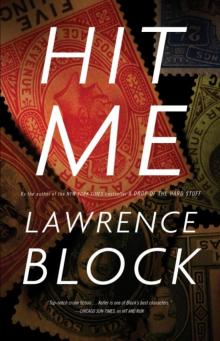 Hit and Run
Hit and Run Hope to Die
Hope to Die Two For Tanner
Two For Tanner Tanners Virgin
Tanners Virgin Dead Girl Blues
Dead Girl Blues One Night Stands and Lost Weekends
One Night Stands and Lost Weekends A Drop of the Hard Stuff
A Drop of the Hard Stuff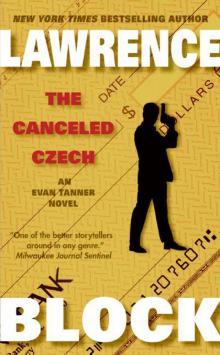 The Canceled Czech
The Canceled Czech Even the Wicked
Even the Wicked Me Tanner, You Jane
Me Tanner, You Jane Quotidian Keller
Quotidian Keller Small Town
Small Town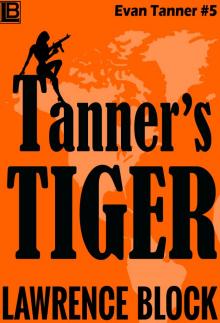 Tanners Tiger
Tanners Tiger A Walk Among the Tombstones
A Walk Among the Tombstones Tanners Twelve Swingers
Tanners Twelve Swingers Gym Rat & the Murder Club
Gym Rat & the Murder Club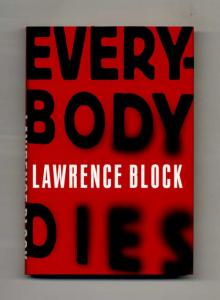 Everybody Dies
Everybody Dies The Thief Who Couldnt Sleep
The Thief Who Couldnt Sleep Hit Parade
Hit Parade The Devil Knows Youre Dead
The Devil Knows Youre Dead The Burglar in Short Order
The Burglar in Short Order A Long Line of Dead Men
A Long Line of Dead Men Keller's Homecoming
Keller's Homecoming Resume Speed
Resume Speed Keller's Adjustment
Keller's Adjustment Eight Million Ways to Die
Eight Million Ways to Die Time to Murder and Create
Time to Murder and Create Out on the Cutting Edge
Out on the Cutting Edge A Dance at the Slaughter House
A Dance at the Slaughter House In the Midst of Death
In the Midst of Death When the Sacred Ginmill Closes
When the Sacred Ginmill Closes You Could Call It Murder
You Could Call It Murder Keller on the Spot
Keller on the Spot A Ticket to the Boneyard
A Ticket to the Boneyard A Time to Scatter Stones
A Time to Scatter Stones Keller's Designated Hitter
Keller's Designated Hitter A Stab in the Dark
A Stab in the Dark Sins of the Fathers
Sins of the Fathers The Burglar in the Closet
The Burglar in the Closet Burglar Who Dropped In On Elvis
Burglar Who Dropped In On Elvis The Burglar Who Painted Like Mondrian
The Burglar Who Painted Like Mondrian The Girl With the Long Green Heart
The Girl With the Long Green Heart The Burglar Who Counted the Spoons (Bernie Rhodenbarr)
The Burglar Who Counted the Spoons (Bernie Rhodenbarr) Burglar Who Smelled Smoke
Burglar Who Smelled Smoke Rude Awakening (Kit Tolliver #2) (The Kit Tolliver Stories)
Rude Awakening (Kit Tolliver #2) (The Kit Tolliver Stories) Don't Get in the Car (Kit Tolliver #9) (The Kit Tolliver Stories)
Don't Get in the Car (Kit Tolliver #9) (The Kit Tolliver Stories) CH04 - The Topless Tulip Caper
CH04 - The Topless Tulip Caper You Can Call Me Lucky (Kit Tolliver #3) (The Kit Tolliver Stories)
You Can Call Me Lucky (Kit Tolliver #3) (The Kit Tolliver Stories) CH02 - Chip Harrison Scores Again
CH02 - Chip Harrison Scores Again Strangers on a Handball Court
Strangers on a Handball Court Cleveland in My Dreams
Cleveland in My Dreams Clean Slate (Kit Tolliver #4) (The Kit Tolliver Stories)
Clean Slate (Kit Tolliver #4) (The Kit Tolliver Stories) The Burglar Who Traded Ted Williams
The Burglar Who Traded Ted Williams Burglar on the Prowl
Burglar on the Prowl In For a Penny (A Story From the Dark Side)
In For a Penny (A Story From the Dark Side) Catch and Release Paperback
Catch and Release Paperback Ride A White Horse
Ride A White Horse No Score
No Score Looking for David (A Matthew Scudder Story Book 7)
Looking for David (A Matthew Scudder Story Book 7)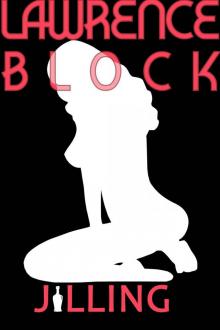 Jilling (Kit Tolliver #6) (The Kit Tolliver Stories)
Jilling (Kit Tolliver #6) (The Kit Tolliver Stories) Ariel
Ariel Enough Rope
Enough Rope Grifter's Game
Grifter's Game Canceled Czech
Canceled Czech Unfinished Business (Kit Tolliver #12) (The Kit Tolliver Stories)
Unfinished Business (Kit Tolliver #12) (The Kit Tolliver Stories) Thirty
Thirty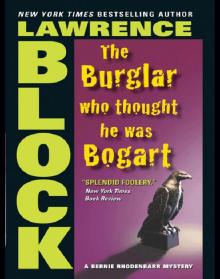 The Burglar Who Thought He Was Bogart
The Burglar Who Thought He Was Bogart Make Out with Murder
Make Out with Murder One Last Night at Grogan's (A Matthew Scudder Story Book 11)
One Last Night at Grogan's (A Matthew Scudder Story Book 11) The Burglar on the Prowl
The Burglar on the Prowl Welcome to the Real World (A Story From the Dark Side)
Welcome to the Real World (A Story From the Dark Side) Keller 05 - Hit Me
Keller 05 - Hit Me Walk Among the Tombstones: A Matthew Scudder Crime Novel
Walk Among the Tombstones: A Matthew Scudder Crime Novel Ronald Rabbit Is a Dirty Old Man
Ronald Rabbit Is a Dirty Old Man The Burglar Who Studied Spinoza
The Burglar Who Studied Spinoza The Burglar Who Liked to Quote Kipling
The Burglar Who Liked to Quote Kipling Keller in Des Moines
Keller in Des Moines Hit List
Hit List The Dettweiler Solution
The Dettweiler Solution HCC 115 - Borderline
HCC 115 - Borderline A Drop of the Hard Stuff: A Matthew Scudder Novel
A Drop of the Hard Stuff: A Matthew Scudder Novel Step by Step
Step by Step The Girl With the Deep Blue Eyes
The Girl With the Deep Blue Eyes If You Can't Stand the Heat (Kit Tolliver #1) (The Kit Tolliver Stories)
If You Can't Stand the Heat (Kit Tolliver #1) (The Kit Tolliver Stories) The Topless Tulip Caper
The Topless Tulip Caper Dolly's Trash & Treasures (A Story From the Dark Side)
Dolly's Trash & Treasures (A Story From the Dark Side) The Triumph of Evil
The Triumph of Evil Fun with Brady and Angelica (Kit Tolliver #10 (The Kit Tolliver Stories)
Fun with Brady and Angelica (Kit Tolliver #10 (The Kit Tolliver Stories) Burglars Can't Be Choosers
Burglars Can't Be Choosers Who Knows Where It Goes (A Story From the Dark Side)
Who Knows Where It Goes (A Story From the Dark Side) Deadly Honeymoon
Deadly Honeymoon Like a Bone in the Throat (A Story From the Dark Side)
Like a Bone in the Throat (A Story From the Dark Side) A Chance to Get Even (A Story From the Dark Side)
A Chance to Get Even (A Story From the Dark Side)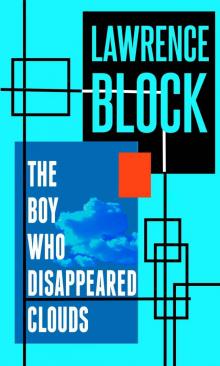 The Boy Who Disappeared Clouds
The Boy Who Disappeared Clouds Collecting Ackermans
Collecting Ackermans Waitress Wanted (Kit Tolliver #5) (The Kit Tolliver Stories)
Waitress Wanted (Kit Tolliver #5) (The Kit Tolliver Stories) One Thousand Dollars a Word
One Thousand Dollars a Word Even the Wicked: A Matthew Scudder Novel (Matthew Scudder Mysteries)
Even the Wicked: A Matthew Scudder Novel (Matthew Scudder Mysteries) Hit Man
Hit Man The Night and The Music
The Night and The Music Ehrengraf for the Defense
Ehrengraf for the Defense The Merciful Angel of Death (A Matthew Scudder Story Book 5)
The Merciful Angel of Death (A Matthew Scudder Story Book 5) The Burglar in the Rye
The Burglar in the Rye I Know How to Pick 'Em
I Know How to Pick 'Em Getting Off hcc-69
Getting Off hcc-69 Three in the Side Pocket (A Story From the Dark Side)
Three in the Side Pocket (A Story From the Dark Side)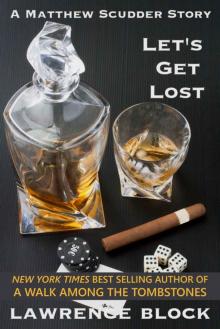 Let's Get Lost (A Matthew Scudder Story Book 8)
Let's Get Lost (A Matthew Scudder Story Book 8) Strange Are the Ways of Love
Strange Are the Ways of Love MOSTLY MURDER: Till Death: a mystery anthology
MOSTLY MURDER: Till Death: a mystery anthology Masters of Noir: Volume Four
Masters of Noir: Volume Four A Week as Andrea Benstock
A Week as Andrea Benstock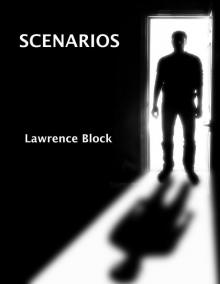 Scenarios (A Stoiry From the Dark Side)
Scenarios (A Stoiry From the Dark Side) The Sex Therapists: What They Can Do and How They Do It (John Warren Wells on Sexual Behavior Book 15)
The Sex Therapists: What They Can Do and How They Do It (John Warren Wells on Sexual Behavior Book 15)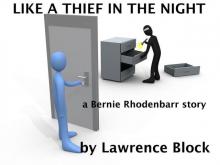 Like a Thief in the Night: a Bernie Rhodenbarr story
Like a Thief in the Night: a Bernie Rhodenbarr story A Diet of Treacle
A Diet of Treacle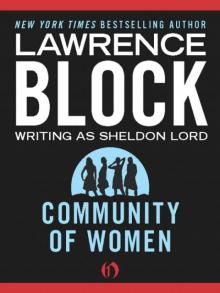 Community of Women
Community of Women Different Strokes: How I (Gulp!) Wrote, Directed, and Starred in an X-rated Movie (John Warren Wells on Sexual Behavior)
Different Strokes: How I (Gulp!) Wrote, Directed, and Starred in an X-rated Movie (John Warren Wells on Sexual Behavior) You Don't Even Feel It (A Story From the Dark Side)
You Don't Even Feel It (A Story From the Dark Side) Zeroing In (Kit Tolliver #11) (The Kit Tolliver Stories)
Zeroing In (Kit Tolliver #11) (The Kit Tolliver Stories) The Wife-Swap Report (John Warren Wells on Sexual Behavior)
The Wife-Swap Report (John Warren Wells on Sexual Behavior) Keller's Fedora (Kindle Single)
Keller's Fedora (Kindle Single) Speaking of Lust
Speaking of Lust Everybody Dies (Matthew Scudder)
Everybody Dies (Matthew Scudder) Defender of the Innocent: The Casebook of Martin Ehrengraf
Defender of the Innocent: The Casebook of Martin Ehrengraf After the First Death
After the First Death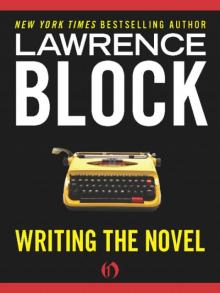 Writing the Novel
Writing the Novel How Far - a one-act stage play
How Far - a one-act stage play Chip Harrison Scores Again
Chip Harrison Scores Again The Topless Tulip Caper ch-4
The Topless Tulip Caper ch-4 The Crime of Our Lives
The Crime of Our Lives Killing Castro
Killing Castro The Trouble with Eden
The Trouble with Eden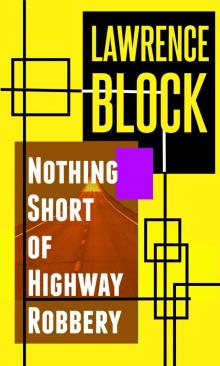 Nothing Short of Highway Robbery
Nothing Short of Highway Robbery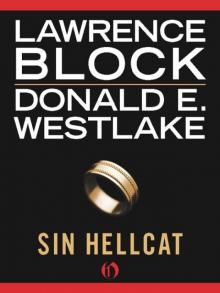 Sin Hellcat
Sin Hellcat Getting Off: A Novel of Sex & Violence (Hard Case Crime)
Getting Off: A Novel of Sex & Violence (Hard Case Crime) Coward's Kiss
Coward's Kiss Alive in Shape and Color
Alive in Shape and Color Blow for Freedom
Blow for Freedom The New Sexual Underground: Crossing the Last Boundaries (John Warren Wells on Sexual Behavior Book 10)
The New Sexual Underground: Crossing the Last Boundaries (John Warren Wells on Sexual Behavior Book 10) April North
April North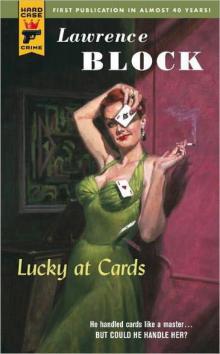 Lucky at Cards
Lucky at Cards One Night Stands; Lost weekends
One Night Stands; Lost weekends Sweet Little Hands (A Story From the Dark Side)
Sweet Little Hands (A Story From the Dark Side) Blood on Their Hands
Blood on Their Hands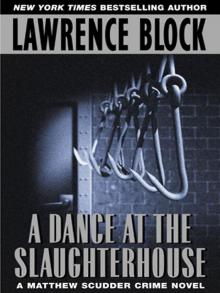 A Dance at the Slaughterhouse
A Dance at the Slaughterhouse Headaches and Bad Dreams (A Story From the Dark Side)
Headaches and Bad Dreams (A Story From the Dark Side) Keller's Therapy
Keller's Therapy The Specialists
The Specialists Hit and Run jk-4
Hit and Run jk-4 Threesome
Threesome Love at a Tender Age (John Warren Wells on Sexual Behavior)
Love at a Tender Age (John Warren Wells on Sexual Behavior) The Devil Knows You're Dead: A MATTHEW SCUDDER CRIME NOVEL
The Devil Knows You're Dead: A MATTHEW SCUDDER CRIME NOVEL Funny You Should Ask
Funny You Should Ask CH01 - No Score
CH01 - No Score Sex and the Stewardess (John Warren Wells on Sexual Behavior)
Sex and the Stewardess (John Warren Wells on Sexual Behavior) A Madwoman's Diary
A Madwoman's Diary When This Man Dies
When This Man Dies Sinner Man
Sinner Man Such Men Are Dangerous
Such Men Are Dangerous A Strange Kind of Love
A Strange Kind of Love Enough of Sorrow
Enough of Sorrow 69 Barrow Street
69 Barrow Street A Moment of Wrong Thinking (Matthew Scudder Mysteries Series Book 9)
A Moment of Wrong Thinking (Matthew Scudder Mysteries Series Book 9) Eight Million Ways to Die ms-5
Eight Million Ways to Die ms-5 Warm and Willing
Warm and Willing Mona
Mona In Sunlight or In Shadow
In Sunlight or In Shadow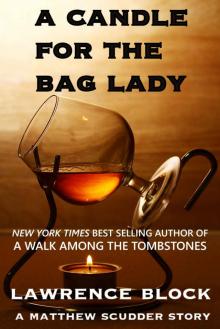 A Candle for the Bag Lady (Matthew Scudder Book 2)
A Candle for the Bag Lady (Matthew Scudder Book 2) Conjugal Rites (Kit Tolliver #7) (The Kit Tolliver Stories)
Conjugal Rites (Kit Tolliver #7) (The Kit Tolliver Stories)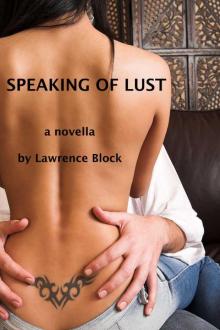 Speaking of Lust - the novella
Speaking of Lust - the novella Gigolo Johnny Wells
Gigolo Johnny Wells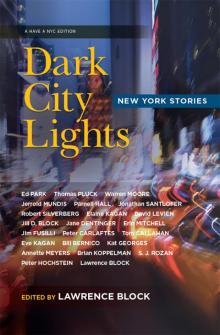 Dark City Lights
Dark City Lights Versatile Ladies: the bisexual option (John Warren Wells on Sexual Behavior)
Versatile Ladies: the bisexual option (John Warren Wells on Sexual Behavior) Passport to Peril
Passport to Peril The Taboo Breakers: Shock Troops of the Sexual Revolution (John Warren Wells on Sexual Behavior)
The Taboo Breakers: Shock Troops of the Sexual Revolution (John Warren Wells on Sexual Behavior) Lucky at Cards hcc-28
Lucky at Cards hcc-28 Campus Tramp
Campus Tramp 3 is Not a Crowd (John Warren Wells on Sexual Behavior)
3 is Not a Crowd (John Warren Wells on Sexual Behavior)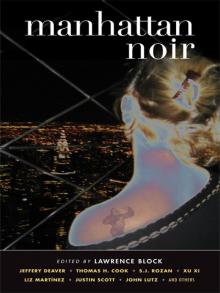 Manhattan Noir
Manhattan Noir The Burglar in the Library
The Burglar in the Library Doing It! - Going Beyond the Sexual Revolution (John Warren Wells on Sexual Behavior Book 13)
Doing It! - Going Beyond the Sexual Revolution (John Warren Wells on Sexual Behavior Book 13) So Willing
So Willing The Burglar Who Traded Ted Williams br-6
The Burglar Who Traded Ted Williams br-6 Candy
Candy Sex Without Strings: A Handbook for Consenting Adults (John Warren Wells on Sexual Behavior)
Sex Without Strings: A Handbook for Consenting Adults (John Warren Wells on Sexual Behavior) The Devil Knows You're Dead: A MATTHEW SCUDDER CRIME NOVEL (Matthew Scudder Mysteries)
The Devil Knows You're Dead: A MATTHEW SCUDDER CRIME NOVEL (Matthew Scudder Mysteries) Manhattan Noir 2
Manhattan Noir 2 The Scoreless Thai (aka Two For Tanner)
The Scoreless Thai (aka Two For Tanner)